Belfast owes its existence to the sea and the river Lagan.
Growing up around the lowest crossing point of the river, the town became the connection between a vibrant hinterland and wider worlds across the seas.
Belfast is still a maritime city, though the modern ships and its rich history need to be sought out.
Titanic at City Hall
We know that ships were being built in Belfast nearly 400 years ago, but it was a Scotsman, William Ritchie, who claimed credit for starting the industry in the 1790s on the County Antrim side of the Lough. In the 1860s, a boom caused by the American Civil War allowed the partnership of Edward Harland and Gustav Wolff to start the firm that eventually became the biggest ship builder in the world, launching over 3000 vessels but perhaps best known for Titanic1.
Three memorials at City Hall10 mark Belfast's Titanic connection. These are grouped close together on the left side of the square when you face the building.
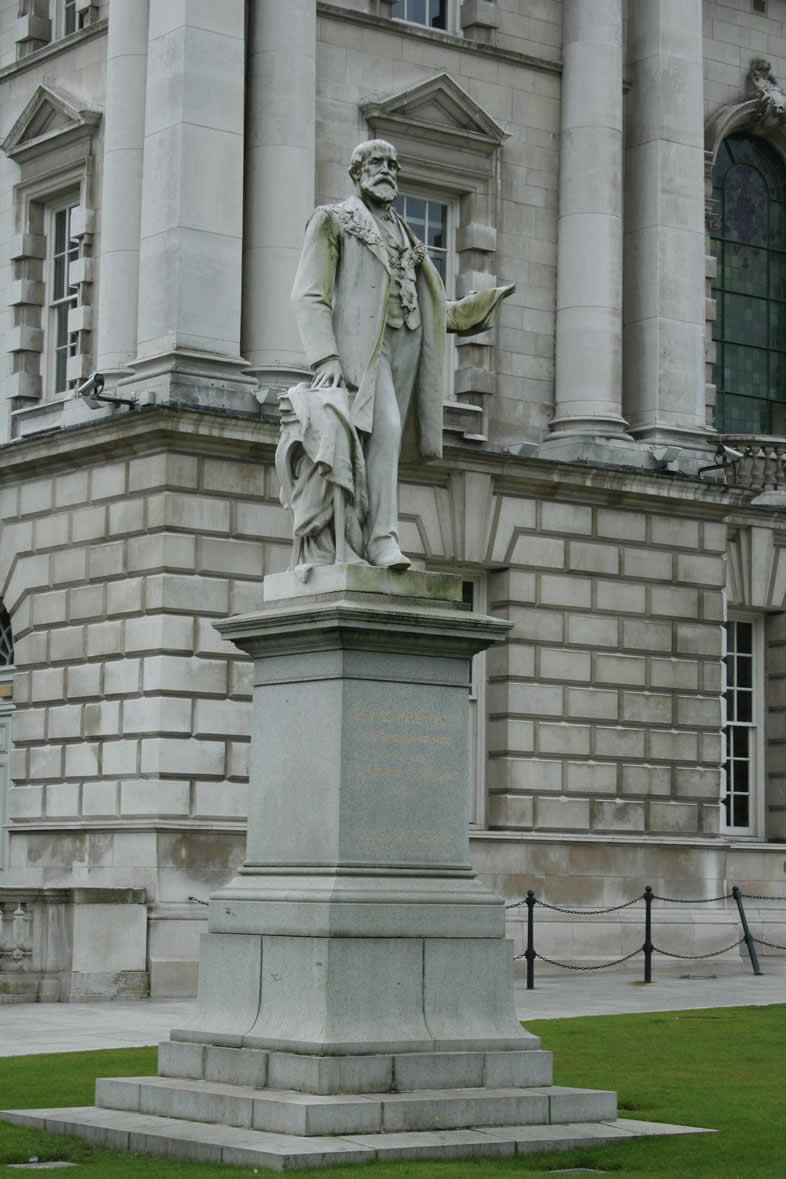
Courtesy of Belfast City Council
City Hall opened in 1906, but the status of Sir Edward Harland, founding partner at Harland and Wolff, builders of Titanic, was such that he was honoured with a statue here in 1903.
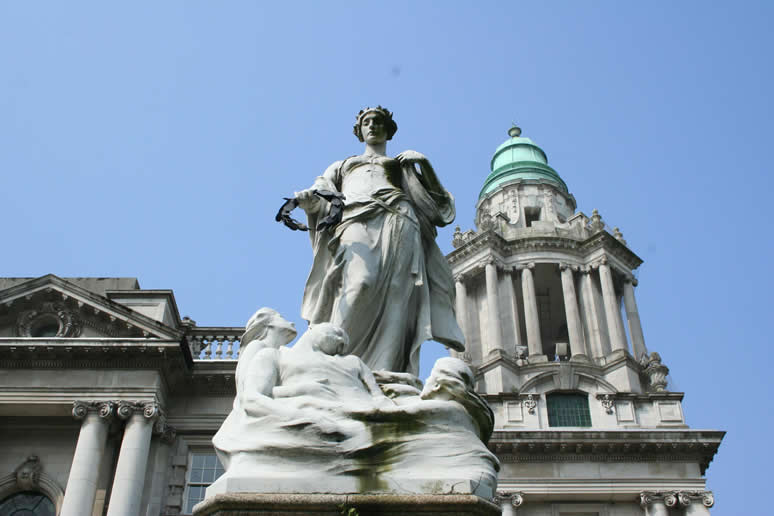
Courtesy of Belfast City Council
Titanic sank in April 1912. The following month over £1000 was raised in Belfast for a memorial to the local people who lost their lives. Originally placed in the middle of the road, a series of car crashes caused it to be moved into the grounds of City Hall in 1959.

Courtesy of Belfast City Council
Lord Pirrie was one of the driving forces behind building the world's biggest ships in Belfast, including Titanic. This memorial originally sat in the City Cemetery but was moved to City Hall's grounds in 2006.
Older than you'd think…
Belfast was born at the meeting of three rivers: the Lagan, Farset and Blackstaff. The town's name comes from the Irish – Béal Féirste – meaning the mouth of the Farset. People have lived here since earliest times. The first settlement grew up around the crossing point of the Lagan nearest the sea. As a town developed, its potential as a port and place of trade was recognised and efforts were made to improve access for ships. The small vessels of the 17th century could moor at the foot of High Street, but as they got bigger they could not navigate the broad, shallow Lagan with its expansive mud banks. Overcoming these obstacles was an ongoing struggle until the middle of the 19th century.
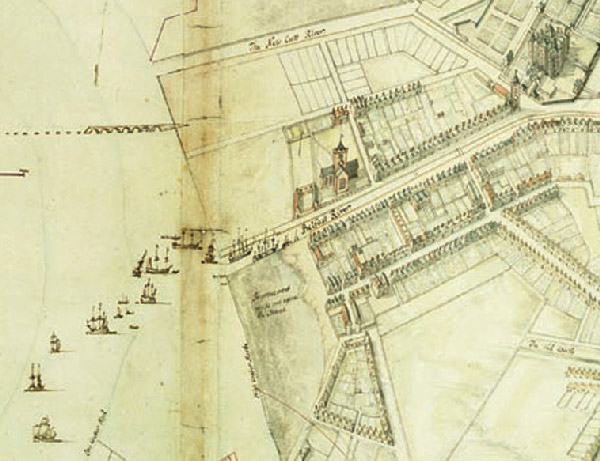
The shopping mall at Victoria Square sits where the Blackstaff runs into the Lagan, creating a little inlet. Construction of the mall uncovered layers of history: in one place there was an early 18th century slipway with four barrels sunk in the ground on either side. We think these barrels were used to keep fish alive for sale. A layer down, archaeologists found an apparent medieval wharf made from wattle (woven sticks) – the first evidence of structures this early in central Belfast.
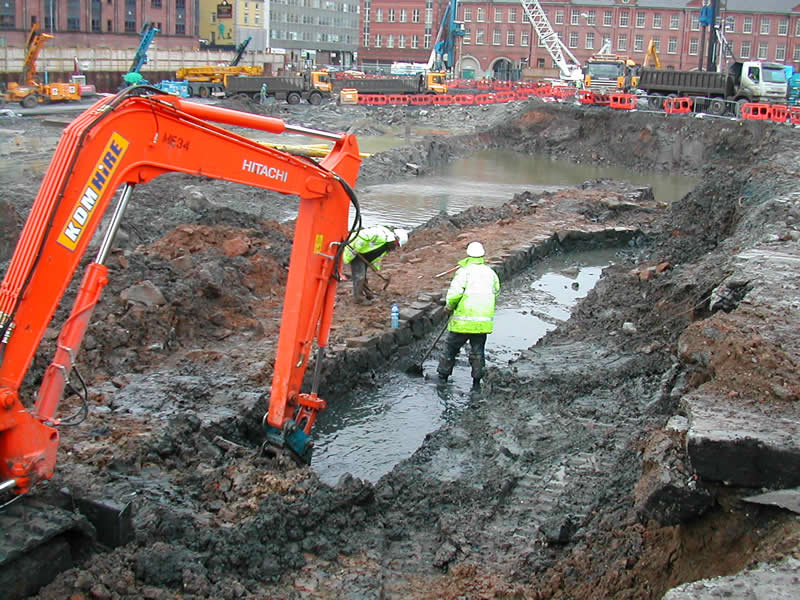
Courtesy of Gahan and Long Ltd
Excavation of the Square roadway revealed May's Dock. This was built in 1815 to take lighters carrying cargo from larger ships which were unable to make it up the narrow, twisting channel before its dredging in the 1840s.
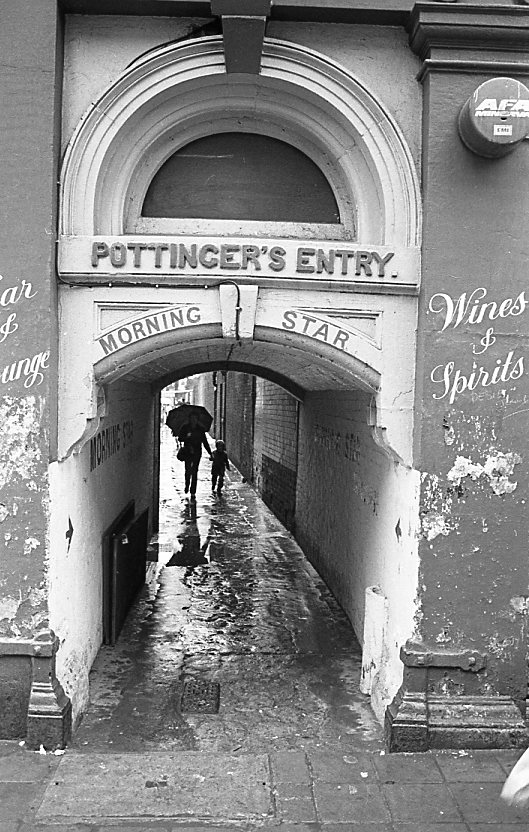
Frankie Quinn ©
Thomas Pottinger was the first Presbyterian sovereign (mayor) of Belfast in 1689. He claimed his ancestor was the first person from Belfast to trade extensively internationally but the most famous member of the family was Sir Henry Pottinger, who negotiated the acquisition of Hong Kong for the British crown and became its first governor in 1843. Mount Pottinger, now an area of east Belfast, was a country house built by the family in the 1740s.
The little passages, or entries, off Anne Street are typical of Belfast. We think they aligned with foot bridges which cross the river Farset, now culverted under High Street2. Their width and length reflects the long, narrow property divisions of the 17th century.
Down to the river
Belfast originally only occupied the County Antrim side of the Lagan and was connected to the other bank in County Down, first by a ford and then by a single bridge. When the Victoria Channel was dredged to deepen and straighten the passage for ships, the upthrow created new ground, first called Dargan's Island and then Queen's Island. It is now known as Titanic Quarter, commemorating the vast shipyards which came to occupy the space.
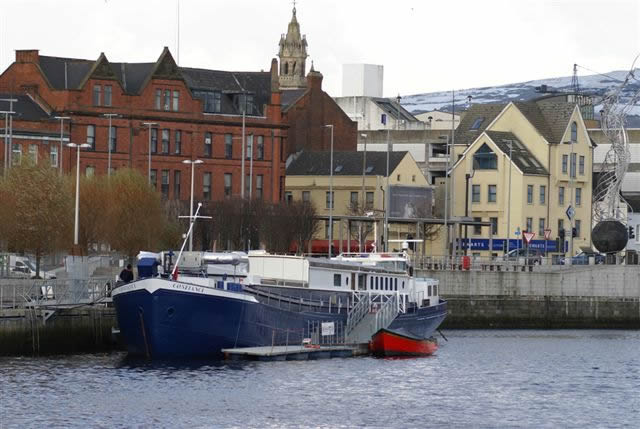
Courtesy of Lagan Legacy
The barge Confiance was brought across from Rotterdam and converted by Lagan Legacy3. It now houses a display about the history of people who worked in and around the Lagan. There is also a café and general exhibition space.
Crossing over the bridge will bring you to Titanic Quarter where further signage and interpretation will connect you to more of Belfast's shipbuilding heritage4. You can also reach Titanic Quarter via the footbridge at the Lagan Lookout.
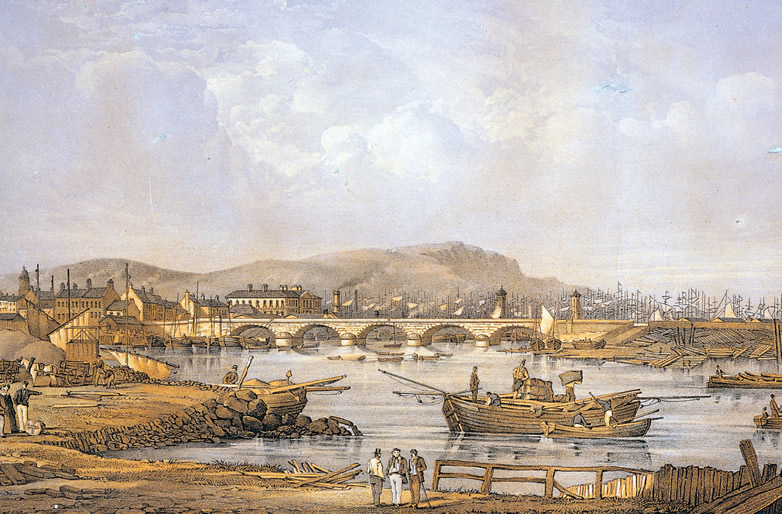
The current bridge dates from 1844 and was widened in 1885. This replaced the earlier, 17th century Long Bridge5 and is around the point where people once forded the river.
As you continue along to Donegall Quay, you will see the old line of the quay at the lower slip road that runs past Tedford's. Mapped as reclaimed land in 1685, it had become Hanover Quay by 1715.
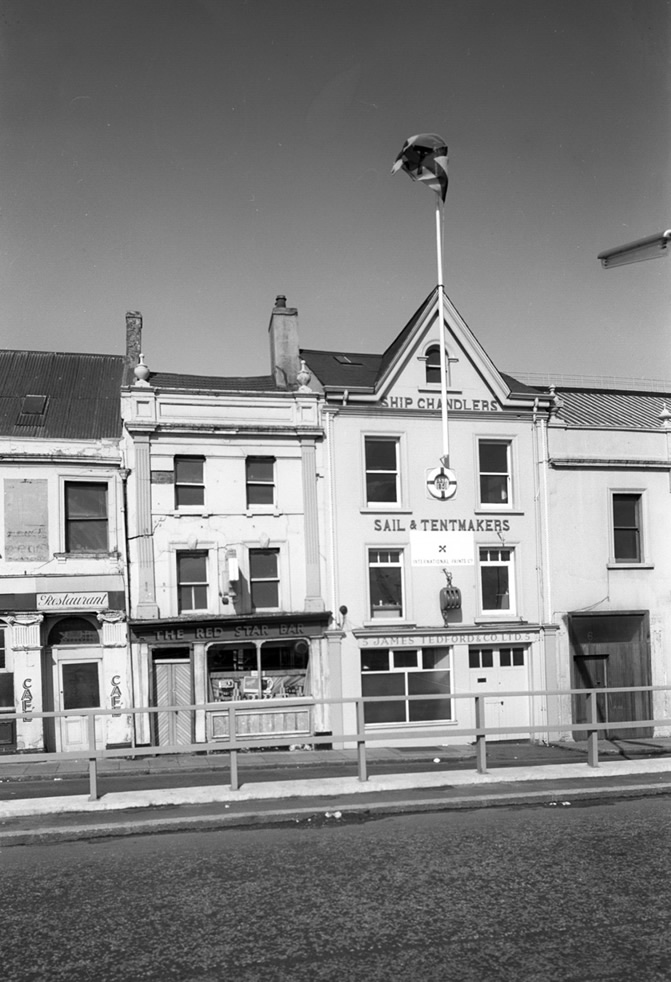
Courtesy of McCutcheon Collection images ©NIEA
Tedford's Ship Chandlers once stood right beside the water and supplied vessels with everything they would have needed before setting off. The building to its right was built between 1760 and 1790 as lofts where ships' sails were made.
Continuing along the river's edge brings you to the Lagan Lookout and a footbridge which connects to Titanic Quarter. Past the Lookout, where the Farset joins the Lagan, you will see the Big Fish, a sculpture by Belfast man, John Kindness.
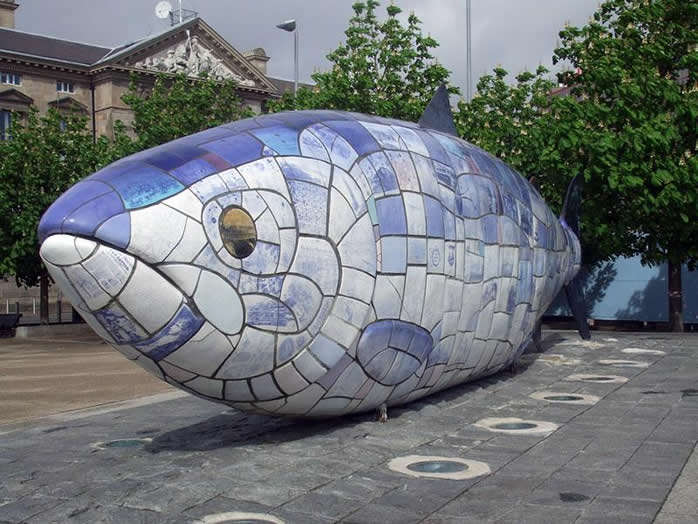
Courtesy of Belfast City Council
The scales of the Big Fish depict scenes from Belfast's history, from the early years of the port to the present day. Inside the fish is a time capsule. Its commissioning marked a stage in Belfast rediscovering its confidence in a proud past and exciting future.
At a jetty downstream from the Big Fish the Lagan Boat Company runs trips on the river6.
The large space on the other side of the road is Corporation Square, named after the Corporation for the Preservation and Improvement of the Port and Harbour of Belfast, which later became the Harbour Commissioners.
Ballast and build
One of Belfast's strengths was the ability of its merchants to band together to develop its port. An Act of 1785 set up the Corporation for the Preservation and Improvement of the Port and Harbour of Belfast, more commonly known as the Ballast Board. After an initial struggle to secure engineering expertise and financial backing, the port took off and supported rapid industrial growth. Belfast's greatest natural resource was its connection by sea to shores beyond Ireland, eventually making it a world industrial force.
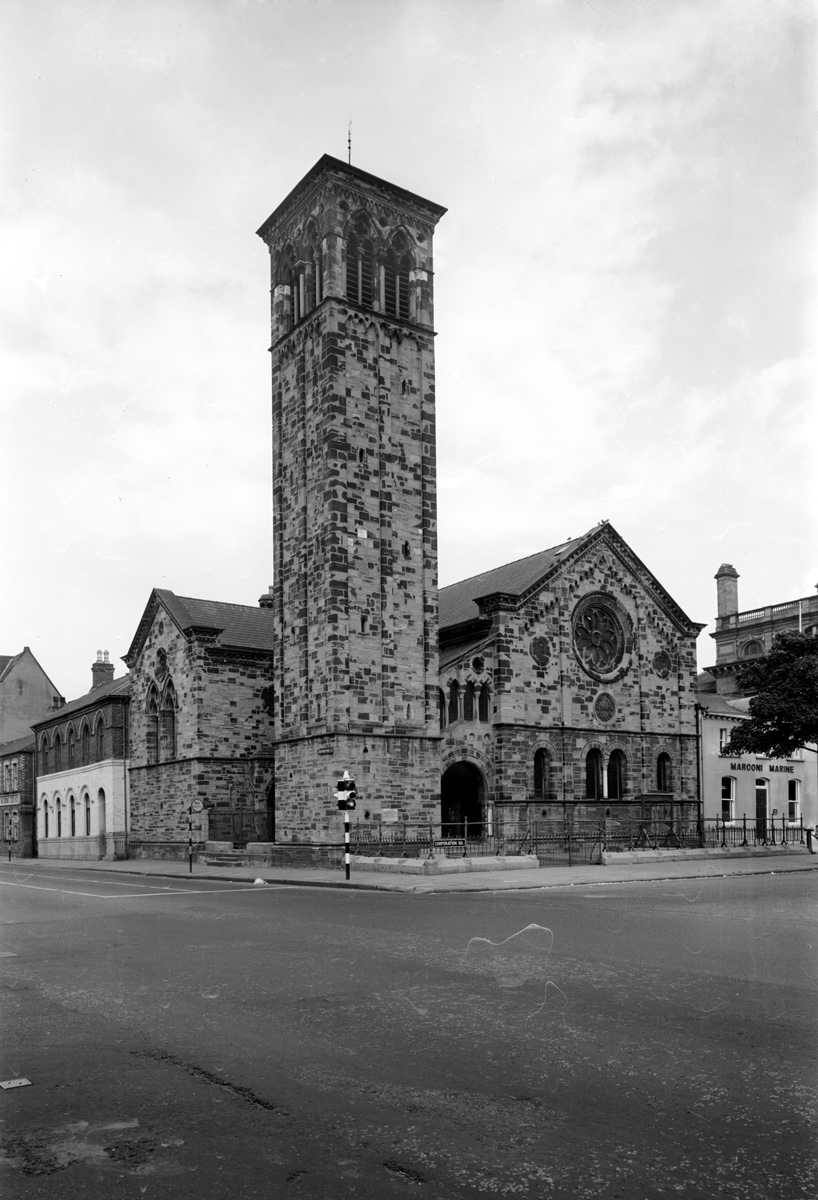
Courtesy of McCutcheon Collection images ©NIEA
The minister of Sinclair Seamen's Church still visits every ship which docks in Belfast. The church's interior is decorated with a multitude of maritime artefacts and references, including a pulpit in the form of a ship's prow. The church is usually open on Wednesday afternoons.
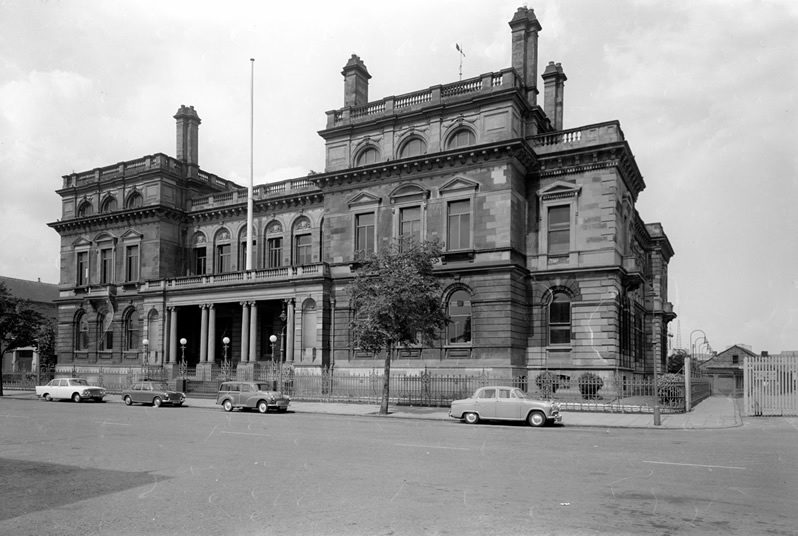
Courtesy of McCutcheon Collection images ©NIEA
These offices are still the headquarters of the Belfast Harbour Commissioners7 who own the land and control the business of the port. The importance of the role and the extensive revenue it brought is reflected in the architecture of this magnificent building, begun in 1852 and extended in the 1890s. It is not open to the public.
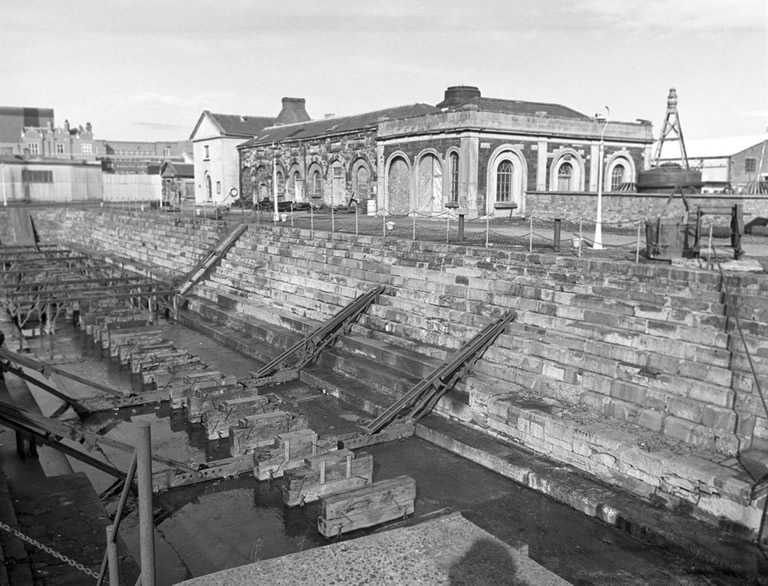
Greater Belfast Industrial Archaeological Survey, ©NIEA
The Clarendon Graving Docks were used to work on ships' hulls once the gates had closed, allowing their water to be pumped out. The first dock was finished at a cost of £7,684 in 1800 by William Ritchie, the second was completed in 1826. The long, low building in the middle was a workshop, with an upstairs designed for working on the rigging of sailing ships. The open dock between this area and the main river was opened in 1851.
Sailortown
This part of Belfast is called Sailortown and was once home to over 5000 people. This is where dockers, sailors and their families lived alongside transient seamen from around the world. Cargo had to be moved by brute manpower and ships needed sailors to man them across the oceans. As Belfast grew at a rate faster than any town in the British Isles, people flooded in from the country to meet these needs, hard as life in Belfast might have been.
The Belfast Dockers' Strike of 1907 has international importance in the development of industrial relations, and had a major impact on the political history of Ireland. A combination of slum clearance, road building and containerisation – which required only a few men to unload ships – devastated the area but its rich histories and traditions still live on.
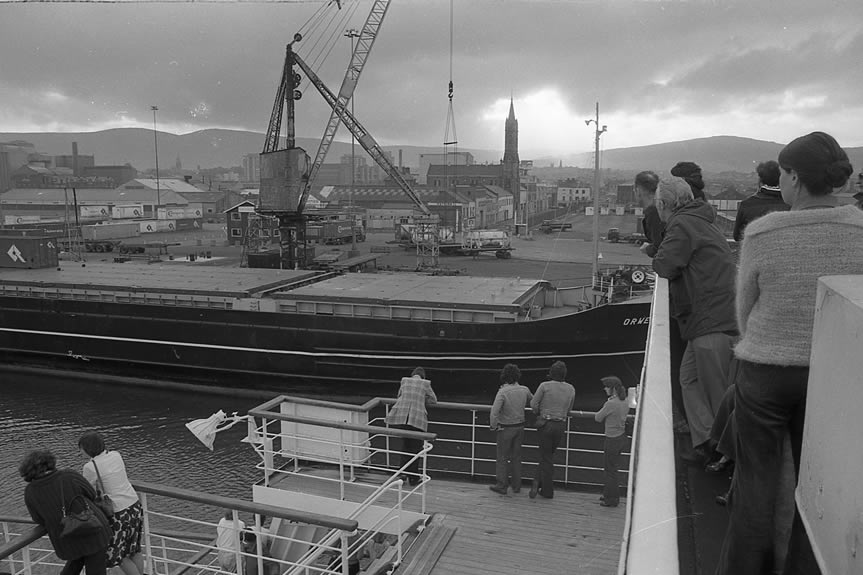
Frankie Quinn ©
St Joseph's Church, ‘the Church on the Quays’, was built in the 1870s to serve the teeming community. It was closed as a place of worship in 2002, to the distress of many of the local people. Regeneration is now bringing people back to the area8.
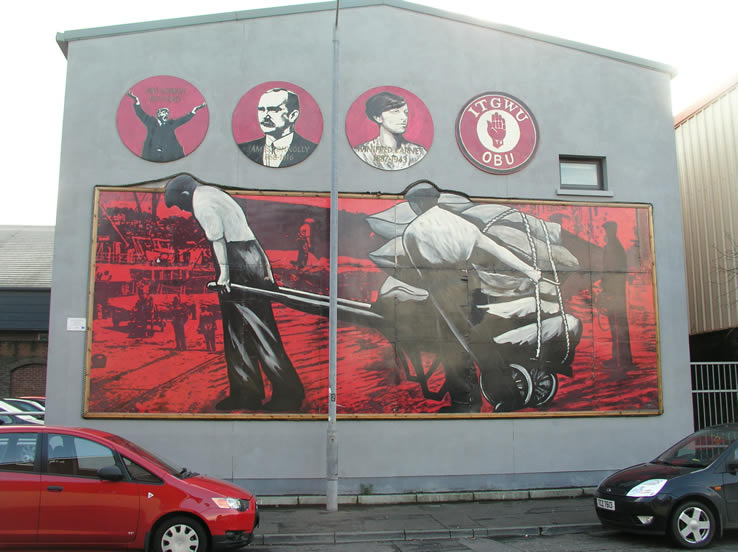
The corner of Dock Street has been renamed 'Dockers' Corner' to commemorate the men who waited every morning to be picked, or not, for hard work unloading ships. This humiliating process ended with decasualisation from 1972 which, along with increased mechanisation, ended a way of life centuries old9.
Trading with the world
Belfast's maritime importance was not limited to shipbuilding. The city's success was down to its merchants, whose ships travelled the world in search of profit.
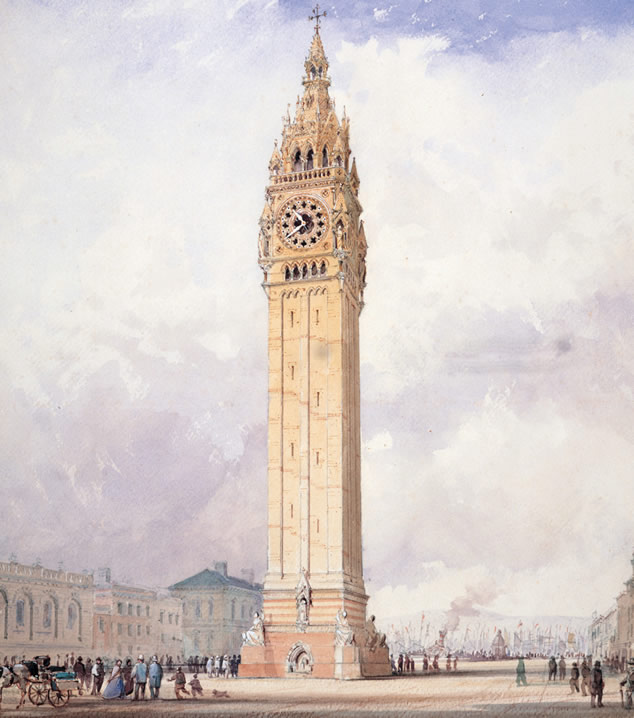
The Albert Memorial Clock, finished in 1869, has a slight lean (even after major restoration) because it is built on reclaimed land. Ships once moored here.
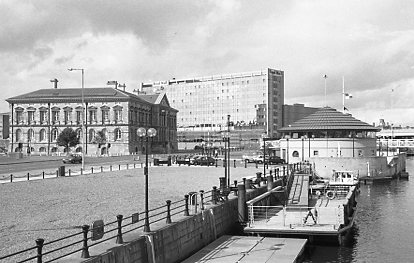
Frankie Quinn ©
Customs and dues were traditionally paid in Carrickfergus but from 1635, they were paid in Belfast, bolstering the town's significance. In 1858, the impressive Customs' House was built on reclaimed land here.

High Street was the centre of the town until the 1900s but smaller ships moored here until it was culverted over. Even after this, ships could come right up into the town at the end of the street.
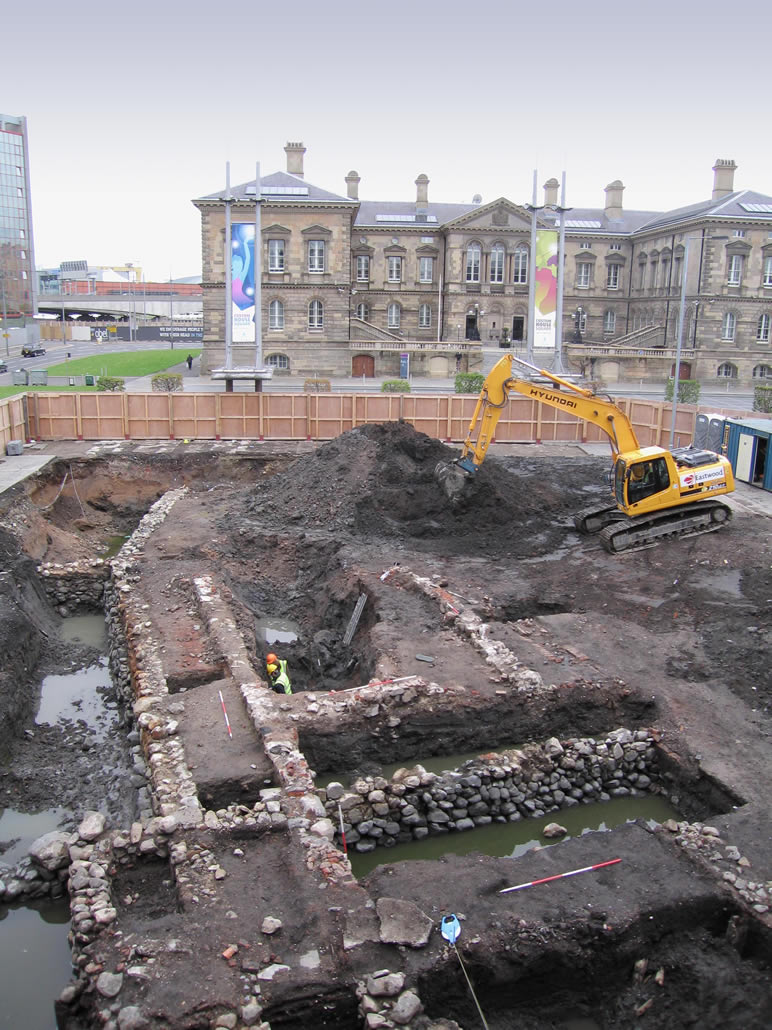
Around the Albert Clock and Customs' House Square, excavations have found evidence of earlier docks, backfilled in 1846 when the Victoria Channel caused Belfast's docks to be moved.
The city's connections to the sea continue to shape its physical and cultural identity. Evidence of Belfast's maritime heritage is all around, waiting to be discovered11.
Find Out More
-
1↑RMS Titanic
RMS Titanic was one of series of Olympic class liners - the biggest man-made moving objects built to that time - constructed by Harland and Wolff for the White Star line. Titanic is the most famous, but her sister ship Olympic was launched first and went on to have a long and distinguished career. The memorial is by the famous sculptor Sir Thomas Brock, who also produced the statues of Sir Edward Harland and Queen Victoria at City Hall. His big break came when he was given the commission for the statue of Prince Albert on London's Albert Memorial
-
2↑High Street
If you look at High Street you will see that is broad and has a distinct hump down the middle. This is because the River Farset ran open down the middle until the nineteenth century.
-
3↑Lagan Legacy
Lagan Legacy is a not-for-profit organisation which has been collected the history of the people who worked in and around the river, including, but not only, the shipyards. It has a large oral history archive and collections of photographs and artefacts. Check out www.laganlegacy.com
-
4↑Titanic Belfast
Titanic Belfast, a major interpretative experience, will open in 2012 along with a series of related events.
-
5↑Long Bridge
Belfast was famous for its 'Long Bridge' - the longest on the British Isles. The section over the river was 840 long but when the arches over the boggy margins were added, it reached nearly a mile which shows how much river has been narrowed in over centuries of reclamation. The bridge was built in the 1680s but had become very dilapidated by the 1800s. It was a favourite place for a summer stroll.
-
6↑Lagan Boat Company Tours
Lagan Boat Company Tours - They bill themselves as 'The world's only Titanic boat tour!'
-
7↑Belfast Harbour Commissioners
The Corporation for the Preservation and Improvement of the Port and Harbour of Belfast was more commonly known as the Ballast Board, set up in 1729. Ships which had unloaded cargo needed ballast (weight) for the journey back. This was taken from the bed of the river and was a way of deepening the channel and keeping it clear. Ultimately this was not enough, and a channel had to be cut across slob lands by the famous engineer William Dargan. The dredged material became what was called Queen's Island - now Titanic Quarter.
- 8↑Titanic Belfast https://www.sailortownregeneration.com/
- 9↑Rediscovering Belfast's Forgotten Maritime Past https://www.stakeholdermedia.com/news/rediscovering-belfasts-forgotten-martitime-past/
- 10↑City Hall tours www.belfastcity.gov.uk/cityhall/tours.asp
- 11↑For all the latest Tours of Belfast www.gotobelfast.com/what_to_do/tours_excursions.aspx



